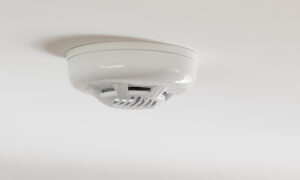Protecting your home and loved ones from intruders and burglars is a top priority for every homeowner, and one of the most effective ways to do so is by installing door and window sensors. These sensors are an important part of any home security system. They play a vital role in keeping your home safe from potential threats. Here, we will explore the importance of door and window sensors for home security.
What Are Door And Window Sensors?
Door and window sensors are a type of sensor that detects when a door or window is opened or closed. These sensors are mostly installed on the frame of the door or window. They can be connected to a security or smart home automation system. When the door or window is opened or closed, the sensor sends a signal to the security system or automation system, which can trigger an alarm or notification.
Benefits Of Door And Window Sensors
Here are some benefits of having these sensors in your home:
1. Protection From Intruders
These sensors are triggered when someone tries to enter your home through a door or window, and an alert is sent to the monitoring center or your smartphone. This ensures that you can take action immediately and prevents the intruder from entering your home.
2. Early Warning System
Door and window sensors provide an early warning system that alerts you of potential danger. It can include a fire or gas leak and a break-in. By being alerted early, you can take action quickly and potentially prevent a more significant disaster from occurring.
3. Peace Of Mind
It can provide peace of mind to homeowners, as they offer an additional layer of security to their homes. With the ability to monitor entry points, homeowners can rest assured that their home is protected from potential intruders. Additionally, some of these sensors can be integrated with home security systems, which can send alerts and notifications to homeowners in case of a breach or attempted entry.
4. Customizable
The sensors are customizable to your needs. You can choose the type of sensor that works best for your home and customize the alerts and notifications you receive. It ensures that you are only notified of what is important to you.
5. Easy To Install
The sensors are easy to install and use, making them an accessible option for homeowners who may not have technical expertise. Most sensors come with simple instructions, and many are designed to be self-installed. These sensors can also be controlled and monitored through mobile apps, making them a convenient and user-friendly option for homeowners.
6. Energy Efficient
With their low power consumption, door, and window sensors are energy-efficient. This means they will not increase your energy bills and can be left on 24/7 without worrying about their impact on your energy consumption.
7. Saves Money
You can avoid costly repairs and replacements by preventing break-ins and potential disasters. Additionally, having a home security system with door and window sensors can reduce your homeowner’s insurance premiums, saving you money over time.
Installing Door And Window Sensors
Here are the steps involved in installing the sensors:
1. Choose The Right Location
It’s important to choose the right location for your sensors. Typically, sensors are installed on doors and windows for entry and exit. You should also consider the location of your control panel and the range of your sensors. You want to ensure that your sensors are within range of the control panel and can communicate properly.
2. Install Sensors On Both Doors And Windows
Installing sensors on both doors and windows can provide maximum protection for your home. Even if a burglar bypasses a sensor on one door or window, they will trigger another sensor as they try to gain entry through another access point.
3. Follow The Manufacturer’s Instructions
Always follow the manufacturer’s instructions when installing your sensors. The installation process can differ based on the sensor type you bought. It’s crucial to go through the instructions thoroughly before commencing the installation.
4. Test Your Sensors
After installing your sensors, test them to ensure they are working properly. You can do this by opening and closing the doors and windows to trigger the sensors. A sensor may need to be adjusted or replaced if it does not trigger.
5. Consider Professional Installation
If you’re uncomfortable installing sensors, consider hiring a professional to do it for you. Professional installation can ensure that your sensors are installed properly and functioning correctly.
6. Use Proper Tools And Equipment
When installing your sensors, use the proper tools and equipment. This can include a drill, screws, and a screwdriver. Using the wrong tools or equipment can damage your sensors, doors, and windows.
Conclusion
Door and window sensors are an important element of a home security system. They provide an early warning of intruders, act as a deterrent, and offer peace of mind. By choosing the right type of sensor for your needs and integrating it with other security systems, you can create a comprehensive and effective security solution for your home. So, contact with the top security system dealers today to protect your home and family from intruders.








